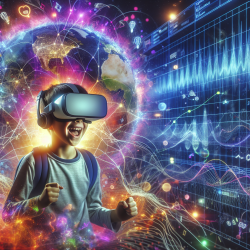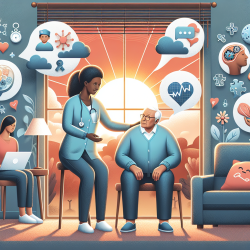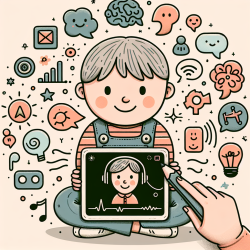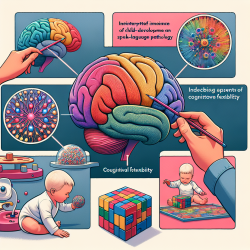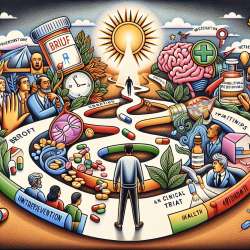Introduction
In the realm of speech-language pathology, practitioners are constantly seeking innovative methods to enhance therapeutic outcomes for children. A recent study titled Deep-Breathing Biofeedback Trainability in a Virtual-Reality Action Game: A Single-Case Design Study With Police Trainers offers intriguing insights that could be adapted to our field. This research explored the use of virtual reality (VR) and biofeedback to improve stress management and decision-making in police trainers. While the context differs, the principles can be applied to speech-language therapy, particularly in managing anxiety and enhancing engagement in children.
Understanding the Research
The study utilized a VR environment to train police officers in deep-breathing techniques, aiming to improve their physiological control and decision-making under stress. The VR setup provided real-time biofeedback, encouraging participants to regulate their breathing to maintain optimal performance in a game-like scenario. This approach not only improved physiological responses but also enhanced engagement and learning outcomes.
Applying VR Biofeedback in Speech-Language Pathology
Speech-language pathologists can draw valuable lessons from this study. Here are some potential applications:
- Reducing Anxiety in Children: VR environments can be tailored to create engaging and non-threatening scenarios for children. By incorporating biofeedback, children can learn to manage anxiety, which often hinders speech and language development.
- Enhancing Engagement: The immersive nature of VR can capture children's attention more effectively than traditional methods. This heightened engagement can lead to improved motivation and participation in therapy sessions.
- Facilitating Skill Transfer: Just as the study demonstrated skill transfer in police trainers, VR can help children apply learned speech and language skills in real-world settings, promoting generalization and retention.
Encouraging Further Research
While the study provides a promising foundation, further research is needed to adapt VR biofeedback specifically for speech-language pathology. Practitioners are encouraged to explore collaborations with technology developers to create customized VR applications that address the unique needs of children with speech and language disorders.
Conclusion
The integration of VR and biofeedback in speech-language therapy holds great potential for improving outcomes for children. By leveraging the insights from the study on police trainers, practitioners can develop innovative strategies that enhance engagement, reduce anxiety, and promote skill transfer. As we continue to embrace data-driven approaches, the possibilities for advancing our field are boundless.
To read the original research paper, please follow this link: Deep-Breathing Biofeedback Trainability in a Virtual-Reality Action Game: A Single-Case Design Study With Police Trainers.
